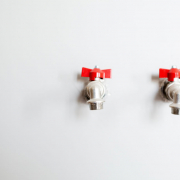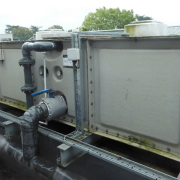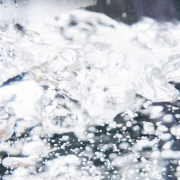Sampling Potable Water for Legionella Bacteria – Legionnaires Disease Outbreaks
The following presentation looks at sampling potable water for Legionella bacteria during Legionnaires disease outbreaks in the USA. It discusses Legionella water sampling of showers and hot water outlets, together with the measurement of other water quality parameters (temperature, pH, chlorine residual), and the selection of typical sampling sites. The video featured in this article is from the US Centers for Disease Control and Prevention (CDC) gives an introduction to environmental health and engineering measures for legionellosis outbreak investigations in the USA.
Sampling Potable Water for Legionella Bacteria
This video is the fourth in a series addressing environmental aspects of legionellosis outbreak investigations. It will demonstrate the correct procedure for collecting potable water samples for Legionella culture during a cluster or outbreak investigation, or when cases of disease may be associated with a facility.
Environmental Assessment & Sampling Plan
Conduct an environmental assessment, and make a sampling plan before collecting samples. This video should be used in conjunction with the written document CDC Sampling Procedure and Potential Sampling Sites.
It’s important to have someone with you who knows about the water system, like a facilities manager when you are sampling. This person can provide access to parts of the system and remove fixtures.
Sampling Showers for Legionella Bacteria
When sampling showers, ask facility maintenance personnel to remove the showerhead, then turn on the water for a couple of seconds to moisten the pipe, and collect 3 to 5 mililitres of the first flush in a sterile plastic tube. Then turn off the water. Insert a swab deep into the pipe, try to get beyond the bend and swab around the inside surface firmly without breaking the stem, also swab the inside of the showerhead if there is visible biofilm on it.
Place the swab in the plastic tube with the first flush water, and snap the stem about one inch from the top of the tube. Make sure there is enough water to cover the swab tip during transport. Add a drop of 0.10 normal sodium thiosulfate solution to neutralise residual disinfectants. Tighten the top to prevent leakage- then label the tube with a unique identifier. Place the tube into the cooler for storage and transportation and record it on the sample data sheet.
Sampling Hot Water for Legionella Bacteria
You can follow these same steps to collect a biofilm swab from a faucet. After the biofilm swab is collected, turn on the water and let it run for a few minutes until it is warm, but not hot. The goal is to obtain water currently in the distribution system along with any material shed from biofilm.
Collect 1 litre of water into a sterile 1 litre bottle, leaving 1 inch of space at the top. Add 0.5 millilitres of 0.1 normal sodium thiosulfate solution to neutralise residual disinfectants. Tighten the top to prevent leakage. Next label the bottle with a unique identifier and record the type and location of the sample on the sample data sheet/ place the bottle into the cooler.
Measuring Other Hot Water Parameters
You will also need to measure the hot water parameters; you can use one bottle, like this one for every sampling site. Run the water until it is as hot as it will get, then collect some water. Measure the hot water temperature. Make sure there is enough time for the thermometer to stabilise, measure pH by placing the paper strip inside the bottle. Compare the colours on the paper strip with the legend on the box. Alternatively you may use a digital pH meter. If you are using a colourmetric wheel test kit to measure chlorine residual, add water from the same water source to the control tube.
Open the pouch with the powder and add it to the second tube. There is a different type of powder for measuring free chlorine vs. Total chlorine, so you’ll need to know which one to measure. Remember if chlorine is the residual disinfectant, you’ll want to measure free chlorine. If monochloramine is the residual disinfectant, you’ll want to measure total chlorine. Add water to the marked level. Place both tubes into the box and compare them against a white background, turn the wheel until the pink colour in the measuring tube matches the colour in the control tube. Note the number on the wheel.
If you are using a different chlorine measurement system, follow the manufacturer’s instructions. You should not use pool test kits since they are generally not sensitive enough for the low chlorine concentration in potable water, which is often less than 2 parts per million. Record all data on the sample data sheet.
Measuring Cold Water Quality Parameters
Taking samples from cold water for Legionella culture is not usually necessary because the bacteria need higher temperatures to grow. However measuring water quality parameters such as temperature, pH and chlorine in cold water can be useful. Sometimes cold water is so warm that it can support growth of Legionella.
Water Sampling Sites
The most helpful sites are at the point of entry to the building, and a couple of outlets furthest from the water main. This can provide valuable information about how water quality changes within the premise plumbing. When you sample hot water heaters, you only need to collect a bulk water sample; it is rare that a biofilm sample can be obtained from a hot water heater since this would require completely draining the tank.
Ask facility maintenance personnel to open the drain valve of the hot water heater and collect 1 litre of water into a sterile 1 litre bottle, leaving a 1 inch space at the top. Preserve and reserve the water sample for transport as previously shown, always measure and record the temperature pH and chlorine level of a bulk water sample collected from a hot water heater.
For tankless or instantaneous hot water heaters, you’ll need to collect water from a pipe as near as possible to the heater as it leaves the heater.
For a building with a re-circulating water system, you’ll want to collect water from a pipe as it returns to the hot water heater – consult with facilities management for the best place to take these samples.
It is extremely important to make sure you collect, label, record and transport your samples accurately and carefully.
For more information please reference the written document CDC Sampling Procedure and Potential Sampling Sites.
How to Sample Potable Water during Legionellosis Outbreak Investigations – U.S Department of Health and Human Services; Centers for Disease, Control and Prevention
Legionella Control Experts
Water Treatment Services offer a comprehensive range of Legionella control and specialist environmental hygiene solutions including water treatment services for the control of Legionella bacteria, Legionella risk assessments, training courses and water testing for the control of Legionnaires’ disease, Legionella, Pseudomonas and other waterborne pathogens in the workplace.
With offices in London serving the South and South East England, Manchester (North West), Birmingham (Midlands), Bristol (South East England and Wales), Leeds (North and North East) and Glasgow (Scotland), supported by regional teams of specially trained engineers, in-field site service specialists and technical experts we can offer professional, cost effective Legionella risk management and ACOP L8 compliance solutions across the whole of the UK, Ireland and internationally.
Contact us today to learn how our expert Legionella control and environmental risk management support solutions can help improve what you do… contact us →
Further Reading…
More information about the CDC Legionella Environmental Assessment Form – Download … here →











